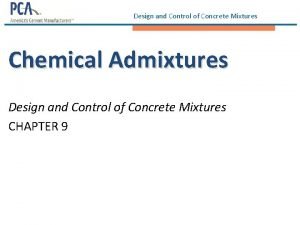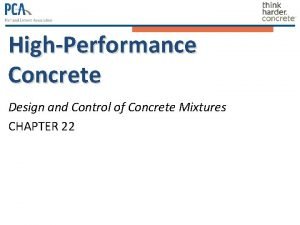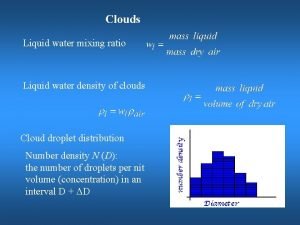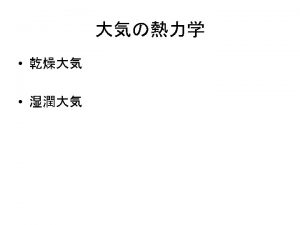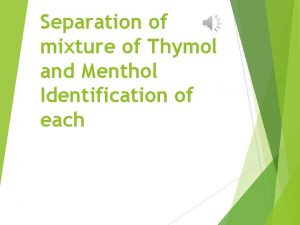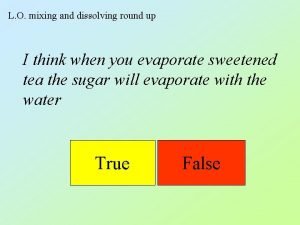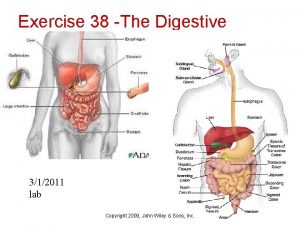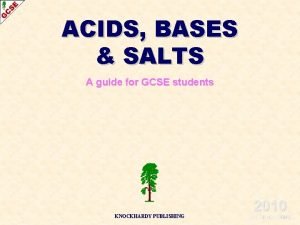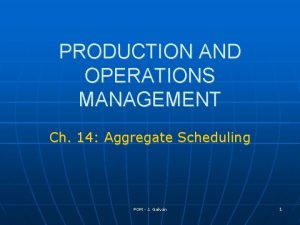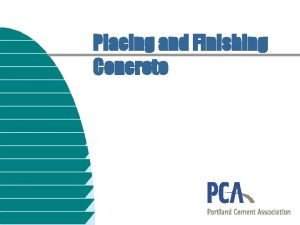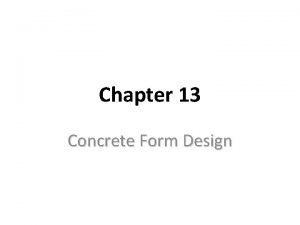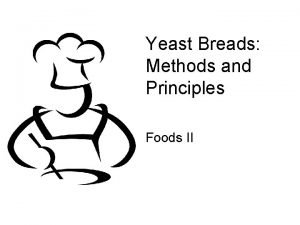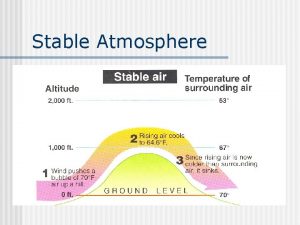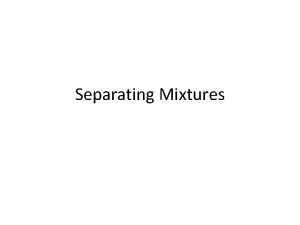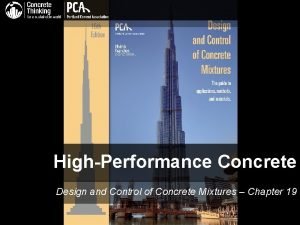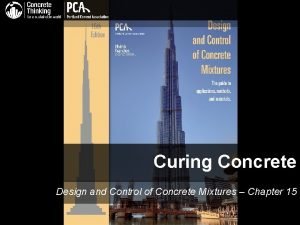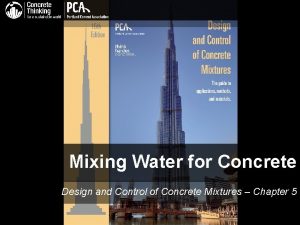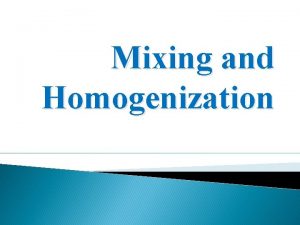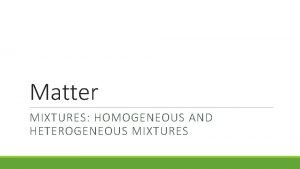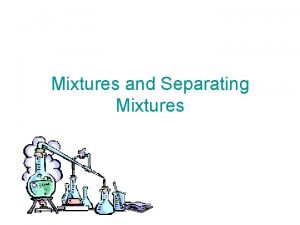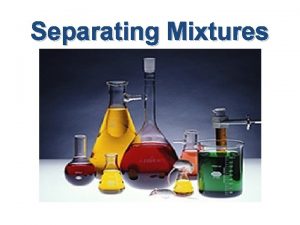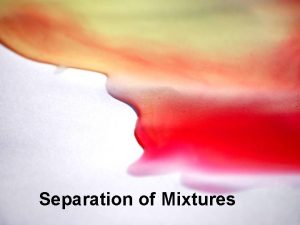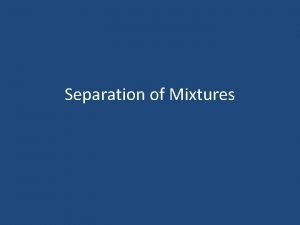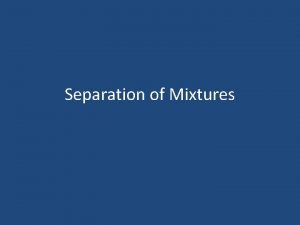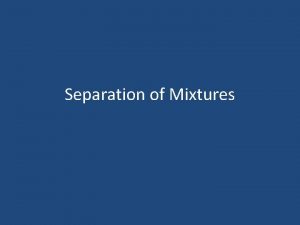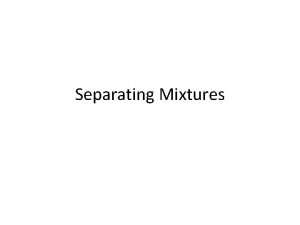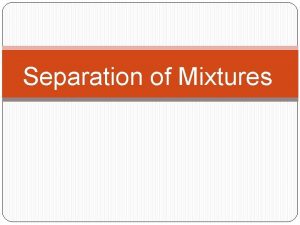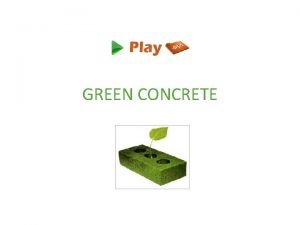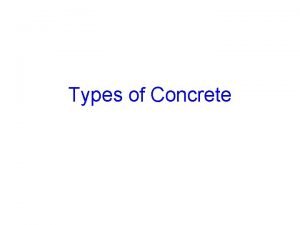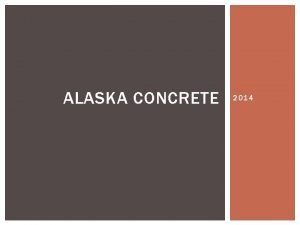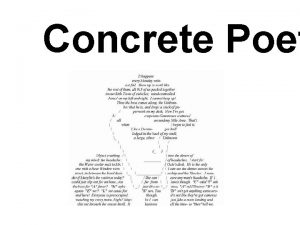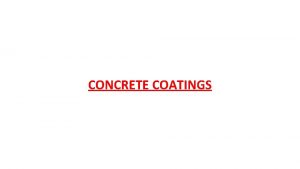Design and Control of Concrete Mixtures Mixing Water





























- Slides: 29

Design and Control of Concrete Mixtures Mixing Water for Concrete Design and Control of Concrete Mixtures CHAPTER 7

Design and Control of Concrete Mixtures Overview • Sources of Mixing Water • Effects of Impurities in Mixing Water on Concrete Properties • Organic Impurities • Interaction with Admixtures

Design and Control of Concrete Mixtures Water

Design and Control of Concrete Mixtures ASTM C 1602 includes provisions for: • Potable water • Non-potable water • Water recovered from concrete production operations • Combined water

Design and Control of Concrete Mixtures ASTM C 1602 Performance Requirements for Questionable Mixing Water Sources

Design and Control of Concrete Mixtures ASTM C 1602 Optional Chemical Limits for Combined Mixing Water

Design and Control of Concrete Mixtures Sources of Mixing Water • • • Municipal water supply Municipal reclaimed water supply Site-sourced water Water from concrete operations Other sources

Design and Control of Concrete Mixtures Municipal Water Supply Typical Analyses of City Water Supplies and Seawater

Design and Control of Concrete Mixtures Municipal Water Supply

Design and Control of Concrete Mixtures Municipal Reclaimed Water • Treated wastewater • Used for nonpotable applications

Design and Control of Concrete Mixtures Site-Sourced Water • Paving projects, remote sites • Wells, ponds, rivers • May contain silt and organic impurities

Design and Control of Concrete Mixtures Reclaiming Water from Concrete Production

Design and Control of Concrete Mixtures Recycled Water Effect of Recycled Water on Concrete Properties*

Design and Control of Concrete Mixtures Seawater • Useable in plain, unreinforced concrete • Use sulfate-resistant cement for marine applications • May aggravate ASR • May cause efflorescence and dampness

Design and Control of Concrete Mixtures Effects of Impurities • • Alkali carbonate and bicarbonate Chloride Sulfate Miscellaneous inorganic salts Acid and alkaline waters Industrial wastewater Silt or suspended particles Organic impurities

Design and Control of Concrete Mixtures Alkali Carbonate and Bicarbonate • • Sodium carbonate – rapid setting Bicarbonates – accelerate or retard setting Threshold for testing – 1000 ppm May aggravate AAR

Design and Control of Concrete Mixtures Chloride • ACI 318 Limits: – Prestressed concrete - 0. 06% – Reinforced concrete exposed to chloride in service - 0. 15% – Reinforced concrete that will be dry or protected from moisture in service - 1. 00% – Other reinforced concrete construction - 0. 30%

Design and Control of Concrete Mixtures Sulfate • May aggravate sulfate attack • ASTM C 1602 limits sulfate to 3000 ppm

Design and Control of Concrete Mixtures Other Common Salts • Carbonates of calcium and magnesium- not very soluble in water and seldom found in sufficient concentration • Bicarbonates of calcium and magnesium- present in some municipal waters • Magnesium sulfate and magnesium chloridepresent in high concentrations without harmful effects on concrete strength

Design and Control of Concrete Mixtures Iron Salts • Acid mine waters - may contain rather large quantities • Iron Salts - concentrations up to 40, 000 ppm do not usually affect concrete adversely

Design and Control of Concrete Mixtures Miscellaneous Inorganic Salts • Manganese, tin, zinc, copper, lead – strength reduction, setting time fluctuation • Sodium iodate, phosphate, arsenate, borate – retard setting • Tolerated up to 500 ppm • Sodium sulfide – 100 ppm can be detrimental

Design and Control of Concrete Mixtures Acid and Alkaline Waters • Acceptance based on concentration • Acids may cause handling problems • High concentrations of alkaline waters may reduce strength • Alkaline waters may aggravate AAR

Design and Control of Concrete Mixtures Industrial Wastewater • Most sources < 4000 ppm • Strength reduction usually 10%-15% • Certain industries produce undesirable impurities • Best to test if solids > 100 ppm

Design and Control of Concrete Mixtures Silt or Suspended Particles • Suspended clay or fine rock < 2000 ppm • Cement fines < 50, 000 ppm

Design and Control of Concrete Mixtures Organic Impurities

Design and Control of Concrete Mixtures Organic Impurities • Sanitary sewage – Little effect with diluted sewage • Sugar – Retarder in small doses, accelerator in large doses • Oils – Decreased strength, affects air • Algae – Decreased strength

Design and Control of Concrete Mixtures Interaction with Admixtures • Impurities affect admixture chemistry • Hard water may cause increased need for airentraining admixture • Trial mixtures should include chemical admixtures

Design and Control of Concrete Mixtures Summary • • Standards Sources Effects of Impurities Interactions with Admixtures

Design and Control of Concrete Mixtures ?
 Air entrainment
Air entrainment Density of concrete
Density of concrete Water and water and water water
Water and water and water water Density of clouds
Density of clouds Water vapor mixing ratio
Water vapor mixing ratio Concrete semi concrete abstract
Concrete semi concrete abstract Concrete semi concrete abstract
Concrete semi concrete abstract Process design and control design should always be in
Process design and control design should always be in Mixing of thymol and menthol
Mixing of thymol and menthol Cutting and mixing food items examples
Cutting and mixing food items examples Mixing red and green marbles physical or chemical change
Mixing red and green marbles physical or chemical change Mixing and dissolving
Mixing and dissolving Exercise 38 anatomy of the digestive system
Exercise 38 anatomy of the digestive system Salt preparation methods
Salt preparation methods Tools for mixing blending straining and rolling
Tools for mixing blending straining and rolling Key tactics in choosing different brand elements
Key tactics in choosing different brand elements Code switching
Code switching Counterseasonal product and service mixing
Counterseasonal product and service mixing How far apart should expansion joints be in concrete
How far apart should expansion joints be in concrete Solutions and mixtures examples
Solutions and mixtures examples Fcr meaning in concrete
Fcr meaning in concrete Concrete form design
Concrete form design Articulated concrete mattresses
Articulated concrete mattresses Soft medium dough examples
Soft medium dough examples Warehouse consolidation benefits
Warehouse consolidation benefits Ramco super plaster mixing ratio
Ramco super plaster mixing ratio Unstable atmosphere definition
Unstable atmosphere definition What are the nutritional contributions of yeast breads
What are the nutritional contributions of yeast breads Mixrite mixing systems
Mixrite mixing systems Herbicide mixing cheat sheet
Herbicide mixing cheat sheet
